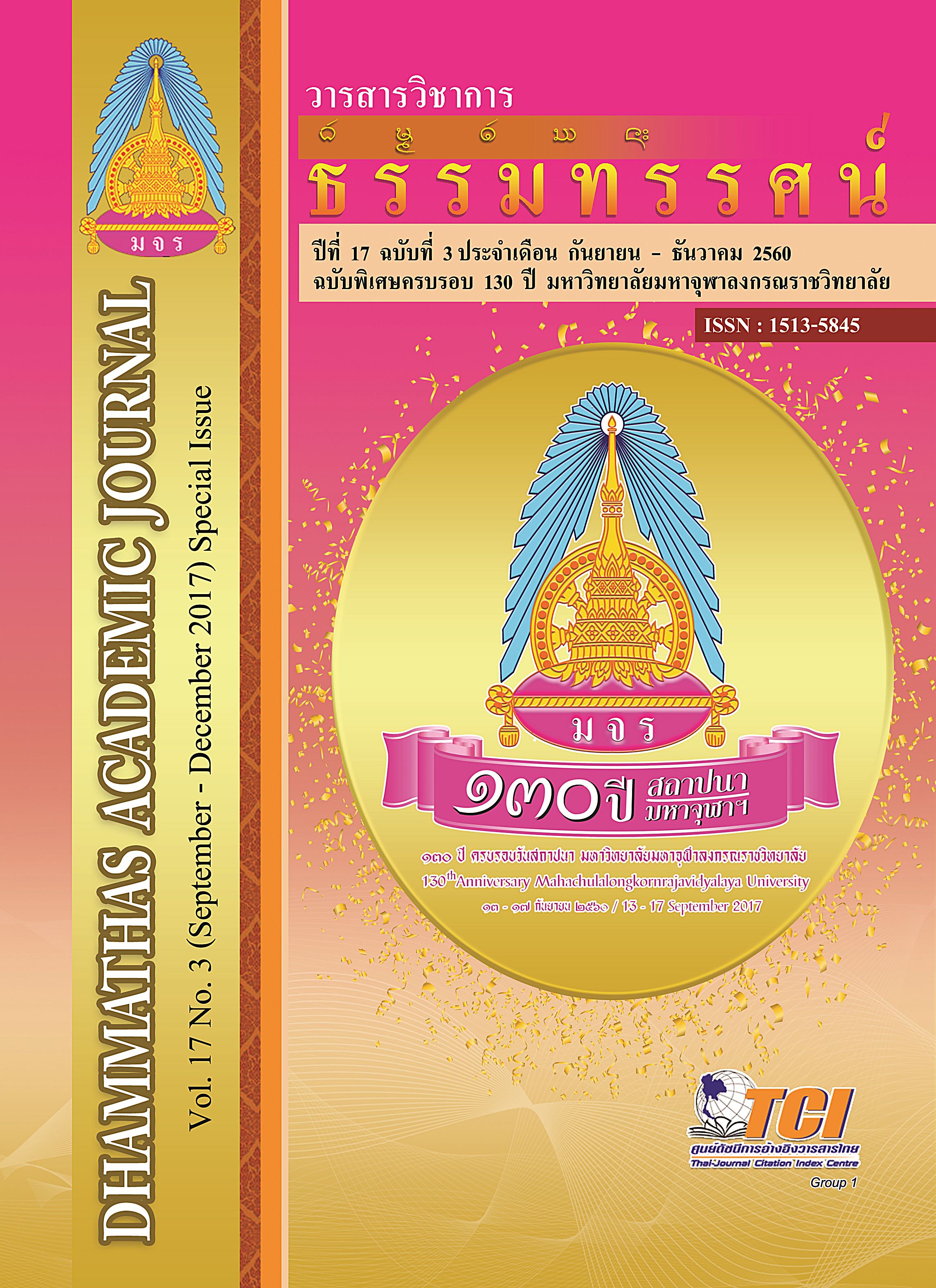A Model of the Four Foundation of Mindfulness Instruction for Adolescenes
Main Article Content
Abstract
The aims of this research were 1) to study the concepts of the IV Satipaṭṭhāna meditation (Mindfulness meditation) in Buddhism; 2) to study the mindfulness meditation instructions in the Buddhist Meditation School in the northeast; 3) to synthesize the The aims of this research were 1) to study the concepts of the IV Satipaṭṭhāna meditation (Mindfulness meditation) in Buddhism; 2) to study the mindfulness meditation instructions in the Buddhist Meditation School in the northeast; 3) to synthesize the instruction model of the IV Satipaṭṭhāna meditation for youth. This research was carried out by the means of the mixed research methods: quantitative and qualitative. The tools used were a questionnaire and an in-depth interview form. The samples of the quantitative research were 150 trainees who participated in the meditation training at Bhodhi Temple (50), Nong Khoo temple (50), Wa Phu Keo temple (50), selected by Simple Random Sampling. The interview was conducted to collect the data from 44 key informants, categorized into 3 groups: scholars (5), lecturers (3), trainees (30), selected by Purposive Random Sampling. The data were analyzed by a computer program to find the statistic values of Frequency, Percentage, Mean and Standard Deviation. The research results revealed that: 1. The IV Satipaṭṭhāna meditation mainly emphasizes on consciousness and its four elements: body, feeling, mind and dhamma. The practice principles are maintenance of consciousness without allowing the feelings to be deluded. The aim of this meditation is to be aware of Rūpa (tangible matters) and Nāma (intangible matters) without greed, anger, delusion to attain the nirvana. 2. The similarities and differences of the mindfulness meditation instruction in the Buddhist institutes in the northeast were 1) Bhodhi Temple, the mindfulness meditation emphasizes on the Rising and Falling meditation to be aware of Rūpa and Nāma at the present time; 2) Nong Khoo Temple, the meditation emphasizes on awareness of 15 bodily movements; 3) Wa Phu Keo temple, the Bud-dho meditation is taught here. Based on the research, the satisfaction scores of the meditation instruction of the temples were that the scores of Bhodhi temple were in between ‘very satisfied’ and ‘most satisfied’( = 4.60); that of Nong Khoo temple was at ‘very satisfied’ level (
= 4.00); that of Wa Phu Keo Temple was at ‘very satisfied’ level (
= 4.13). Therefore, the scores of all temples were at the ‘very satisfied’ level. 3. The ‘Phassa-bhavanā (contact meditation)’ model focusing on consciously realization of body, feelings, mind and dhamma through the learning processes is consisted of two types: 1) traditional instruction; the contact meditation on the bodily movements: standing, walking, sitting, lying down, bodily movements; 2) applied instruction through the activities such as Happiness Return Activity, Power of Happiness Activity, Meritorious Performance with Empty Mind, Residential Facility Clean, Temple Building Cleaning, Public Assistance, Youth wisdom development in daily life. The benefits of the mindfulness meditation are to eliminate suffering, increase happiness and develop the life by wisdom.
